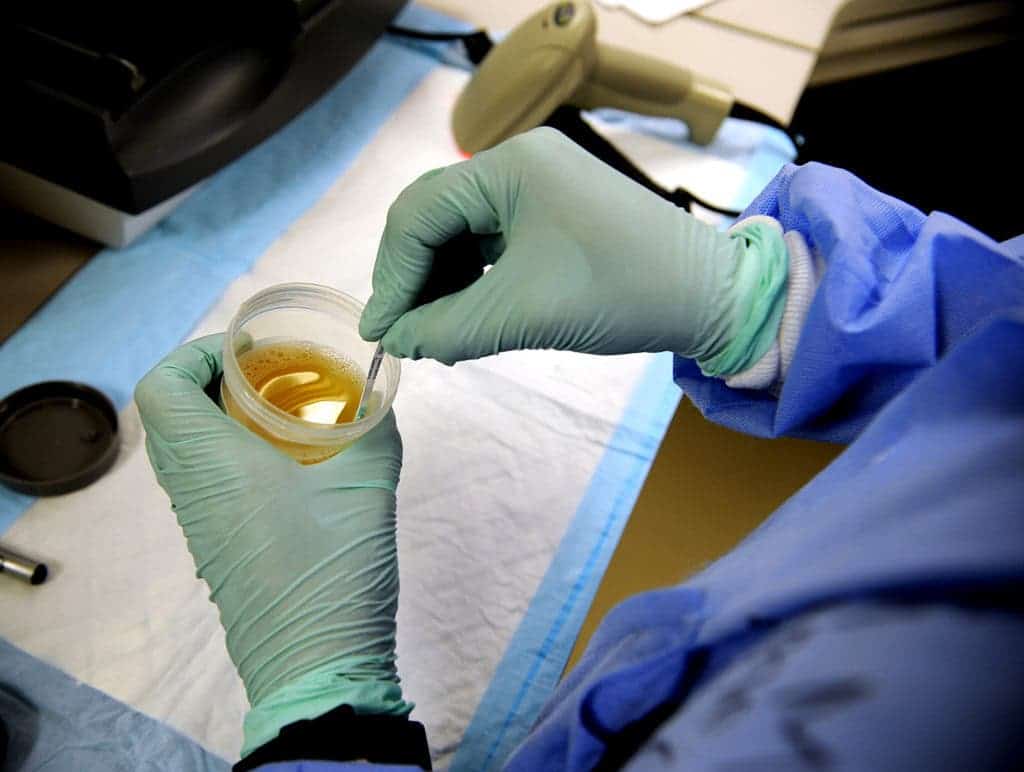Despite their important to increase patient survival, tools to detect cancer in its early stages can be expensive and require trips to a clinic. But this could change in the near future thanks to a color-change urine test, developed by an international pair of engineer labs.

Imperial and MIT labs are working on cheaper, faster, and easier-to-use tests. Their most recent development is a tool that changes the color of mouse urine when colon cancer, also known as bowel cancer, is present. Their findings were published in Nature Nanotechnology.
The technology, in its early stage, works by injecting nanosensors into mice. These nanosensors are then cut up by enzymes released by tumors known as proteases. When the nanosensors are broken up by proteases, they pass through the kidney and can be seen with the naked eye after a urine test that produces a blue color change.
The researchers, led by Imperial’s Professor Molly Stevens and MIT’s Professor Sangeeta Bhatia, applied this technology to mice with colon cancer, and found that urine from tumor-bearing mice becomes bright blue, whereas test samples taken from healthy mice don’t.
“By taking advantage of this chemical reaction that produces a color change, this test can be administered without the need for expensive and hard-to-use lab instruments. The simple readout could potentially be captured by a smartphone picture and transmitted to remote caregivers to connect patients to treatment,” Professor Stevens said.
When they grow and spread, tumors often produce biological signals known as biomarkers that clinicians use to both detect and track disease. One family of tumor enzymes known as matrix metalloproteinases (MMPs) helps promote the growth and spread of tumors by ‘chewing up’ the tissue scaffolds that normally keep cells in place.
Many cancer types produce high levels of several MMP enzymes, including one called MMP9. In this study, the researching team developed nanosensors where ultra-small gold nanoclusters (AuNCs) were connected to a protein carrier called neutravidin, through linkers that are broken by MMP9s.
In the test, researchers used two AuNC properties—their very size, and their ability to cause a blue color change when treated with a chemical substrate and hydrogen peroxide. They designed the AuNC-protein complexes to disassemble after being cut by MMPs in the tumor environment or blood.
“The AuNCs are similar to materials already used in the clinic for imaging tumors, but here we are taking advantage of their unique properties to give us additional information about disease. However, there’s still a lot of optimization and testing needed before the technology can move beyond the lab,” said co-author Dr. Colleen Loynachan.
The next step for the team will be to try to increase the specificity and sensitivity of the sensors by testing them in more animal models to investigate diagnostic accuracy and safety. They are now working on a formulation that is easier to administer and identifying ways to make the sensors responsive to multiple biomarkers in order to distinguish between cancers and other diseases.






